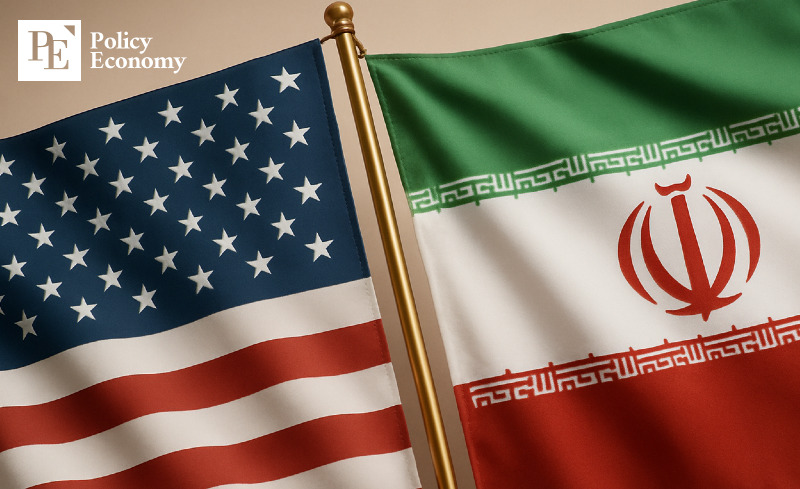United States Government Announces "Iranian Nuclear Facilities Were Destroyed" in New Media Campaign
Input
Modified
Trump Rebukes Reporter for Questioning Iran Nuclear Strike Damage White House Joins Effort to Praise Trump Iran Admits Damage but Vows to Continue Nuclear Development

The US government has directly refuted media reports suggesting that the damage from its airstrikes on Iran’s nuclear facilities was limited. In an effort to protect the legacy of President Donald Trump, who made the decision to authorize the strikes, Trump himself, along with top intelligence officials and the White House, launched a coordinated public relations campaign.
Iran, for its part, has officially acknowledged that its nuclear facilities suffered significant damage as a result of the US attacks. However, Tehran made it clear that it has no intention of halting its nuclear program despite the setback.
Trump: "CNN Reporter Should Be Chased Out Like a Dog"
On the 25th (local time), President Trump mentioned a CNN reporter by name on his social media platform Truth Social, writing that "she should be immediately condemned and chased out of CNN like a dog." This public complaint came after CNN aired a report questioning Trump's claim that Iran's nuclear facilities had been completely destroyed. He also criticized The New York Times (NYT), which ran a similar report, calling them "really bad and sick people."
Tulsi Gabbard, Director of National Intelligence (DNI), also posted on X (formerly Twitter) the same day, stating, "The president’s repeated statements that Iran’s nuclear facilities were destroyed are confirmed by new information," defending Trump’s position. She added, "If Iran chooses to rebuild, it will need to reconstruct all three nuclear facilities (Fordow, Natanz, and Isfahan), which will take years."
The White House also released a press statement titled "Iran's Nuclear Facilities Were Devastated, Claims Otherwise Are Fake News," highlighting assessments from various agencies and officials emphasizing the damage to Iran's nuclear sites. One example was an evaluation report from the Israel Atomic Energy Commission released by the White House, which stated, "The US destroyed key infrastructure at the Fordow site and rendered the uranium enrichment facilities inoperable," and "Iran's nuclear weapons development capability has been set back by several years."
DIA's Initial Damage Assessment
The CNN and NYT reports in question were based on the initial damage assessment from the Defense Intelligence Agency (DIA), a US Department of Defense agency. According to CNN's report on the 24th, an anonymous official cited the report, telling CNN that "the US airstrikes delayed Iran’s nuclear program by, at most, a few months." Two other officials explained that most of Iran's centrifuges were still "operational."
NYT also reported that "according to the assessment, the US succeeded in blocking the entrances to the Fordow and Natanz nuclear facilities, but the internal underground structures remained intact." The five-page preliminary report stressed that "Iran still controls most of its nuclear material and could resume nuclear weapons development relatively quickly if needed."
Evidence also suggested that highly enriched uranium had already been moved to another location. Citing the report, NYT stated, "Most of Iran's highly enriched uranium was relocated before the airstrikes, resulting in minimal actual damage to the nuclear material," adding, "Some of it appears to have been transferred to unofficial nuclear facilities." The report continued, "Israeli intelligence also believes that Iran maintains small secret enrichment facilities designed to allow the nuclear program to continue even if key sites are attacked."
After the reports, the White House acknowledged the existence of the DIA’s initial assessment but dismissed its contents as "completely wrong." White House Press Secretary Karoline Leavitt said in a statement to CNN, "This leak is a malicious attempt to discredit President Trump and insult the fighter pilots who carried out the mission successfully," adding, "Everyone knows what happens when fourteen 30,000-pound bombs hit their target, its total destruction."

Signs of Iran's 'North Korea-ization'
On the 25th, Iran admitted for the first time that its nuclear facilities had sustained significant damage from the US airstrikes. Esmail Baghaei, spokesperson for Iran’s Foreign Ministry, said in an interview with Al Jazeera, the leading broadcaster in the Arab world, "Our nuclear facilities were severely damaged" and added, "Given the repeated attacks, the damage is certain." However, he refrained from providing specific details, referring to it as a "technical matter," and did not disclose the exact strike locations or the extent of the damage.
The main concern is that Iran has shown no intention of abandoning its nuclear development plans even after the airstrikes. On the same day, Spokesperson Baghaei emphasized Iran’s determination to continue its nuclear program. He stated, "Iran’s right to peaceful nuclear energy remains valid" and added, "We will continue to exercise our right to peaceful nuclear energy under the NPT (Non-Proliferation Treaty)." He also described the US airstrikes as a critical blow to international law, diplomacy, and ethics, asserting, "The international community’s primary concern should be condemning these illegal actions by the United States."
Some experts now warn that Iran could withdraw from the NPT and follow North Korea’s path. There are concerns that Iran may break free from international monitoring by the International Atomic Energy Agency (IAEA), develop nuclear weapons, and become an isolated state using its nuclear capability as a bargaining chip for regime survival. One diplomatic expert noted, "Iran may have concluded from this conflict that the only way to ensure its security is through nuclear development," adding, "Without precise international monitoring and a diplomatic resolution, preventing Iran’s nuclear development will be difficult."





















